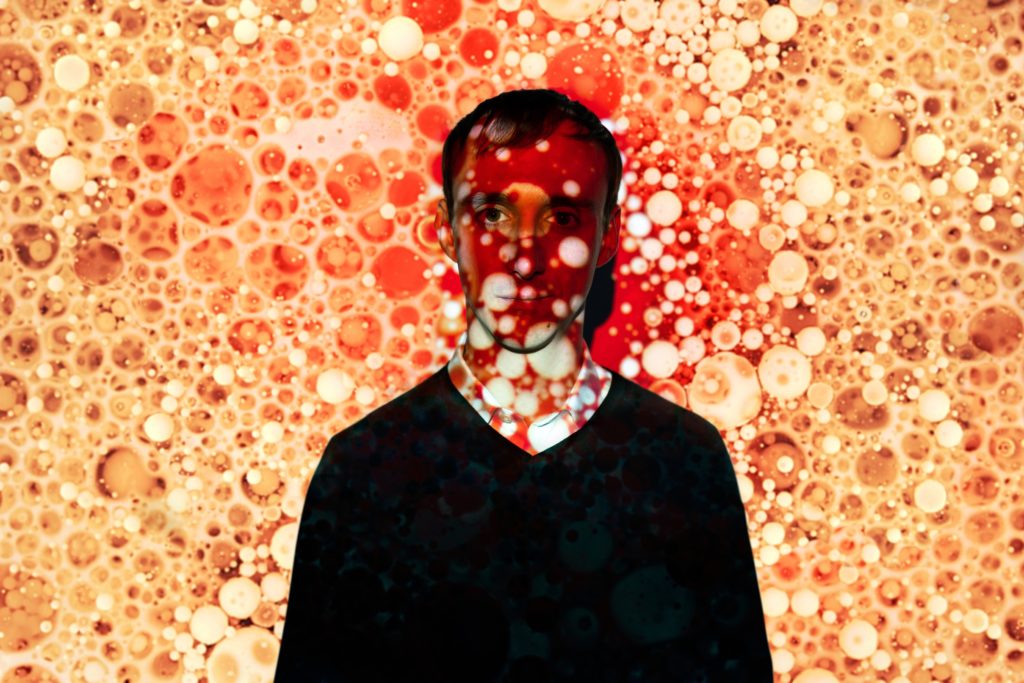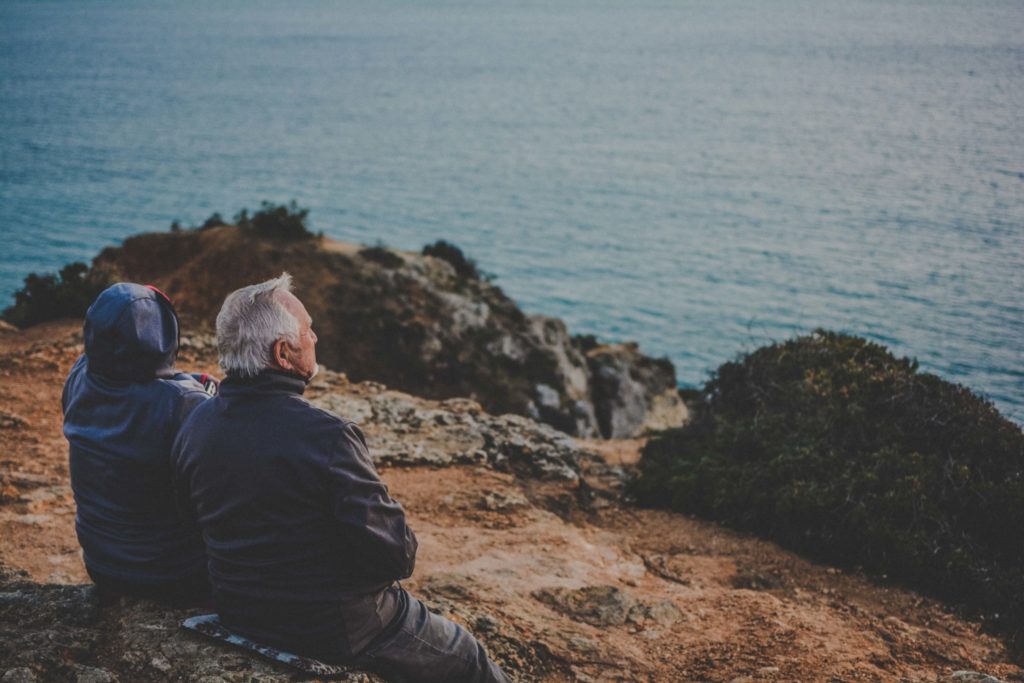


The Jack Kevorkian Plague
Death is in the air. No, I am not referring to the coronavirus. The pathogen I mean is a cultural pandemic, the embrace of doctor-prescribed suicide and of administered homicide as acceptable responses to human suffering. Let’s call it the “Jack Kevorkian Plague,” after the late pathologist who in the 1990s became world-famous by assisting the suicides of some 130 people. Before Kevorkian, the euthanasia movement was mostly a fringe phenomenon. After Kevorkian, although certainly not because of him alone, assisted suicide had been made legal in Oregon, and large swaths of the American public accepted the practice. Now, a mere 20 years later, lethal-injection euthanasia is legal and popular in Belgium, Canada, Colombia, Luxembourg, and the Netherlands. Doctor-assisted suicide is legal in Germany, Switzerland, the Australian states of Victoria and Western Australia, and nine U.S. states and the District of Columbia. Pressure to legalize euthanasia is increasing in Australia, France, India, Italy, New Zealand, Portugal, Spain, and the United Kingdom. The media report stories about euthanasia and assisted suicide generally through the limited prism of “compassion.” Kevorkian attempted to justify his campaign likewise. But compassion was never his true motive. As he wrote in his book Prescription Medicide: The Goodness of a Planned Death, “Helping suffering or doomed persons kill themselves” was “merely the first step, an early distasteful obligation…that nobody in his right mind would savor.” Not About Compassion So, if it wasn’t about compassion, what was the real point? Kevorkian saw euthanasia as the perfect means to steer culture in a sharply utilitarian direction. Indeed, his great insight was that once society embraced that “distasteful first step,” the sanctity-of-life ethic — which he disdained, seeing it as an irrational religious belief — would be obliterated, and the door would be opened to using the bodies of people who commit suicide as natural resources available for utilitarian purposes. Kevorkian gave several examples of what he meant. He thought that euthanasia clinics should be established that “make the quantum leap of supplementing merciful killing with the enormously positive benefit of experimentation and organ donation.” After all, he argued, if we are going to help people die, we might as well derive benefit from their deaths. In 1998 he assisted the suicide of Joseph Tushkowski, a former police officer with quadriplegia. After Tushkowski died, Kevorkian ripped out the man’s kidneys — the medical examiner called it “a bizarre mutilation” — and then at a press conference offered them to the public, “first come, first served.” Three Countries Today, three countries —Belgium, Canada, and the Netherlands — have legally effectuated Kevorkian’s idea to join euthanasia to organ harvesting, although they don’t do it in such a crude fashion. Rather, suicidal persons go to the hospital to be killed, and immediately afterward their bodies are moved to a surgical suite for organ procurement. Canada has gone so far down the road that organ-donation organizations are advised in advance so that suicidal persons can be solicited for their organs. Kevorkian also advocated child euthanasia. In 1988, in an article in Medicine and Law, he argued that babies born with disabilities “such as severe spina bifida, paraplegia, and hydrocephalus” should be candidates for euthanasia (and experimentation), provided that proper consent were given. Today, under a bureaucratic euthanasia checklist known as the Groningen Protocol, the Netherlands permits, although it has not explicitly legalized, infanticide for conditions of the kind that Kevorkian referenced. Netherlands law permits euthanasia more broadly for children twelve years of age and older. In Belgium, there is no lower age limit for euthanasia. According to official euthanasia reports, in the past few years at least three children in Belgium have been euthanized, including a nine-year-old. Children in Canada cannot be euthanized, but that restriction may soon be repealed. Some pediatricians there have volunteered to euthanize minors once it becomes legal, perhaps even without parental consent, if the children are “mature.” A Fundamental Right Kevorkian believed that access to assisted suicide and euthanasia is a fundamental human right that should be available to any competent person wanting to die. Canada’s Supreme Court has partially agreed. In 2015 it established a right to “medical assistance in dying (MAiD),” as it is euphemistically called, for all competent patients with a medically diagnosed condition that causes “irremediable suffering,” including “psychological pain.” An Ontario court has ruled that this right to be killed is fundamental and that it trumps Canada’s Charter right of “freedom of religion and conscience.” Under the province’s rules of medical ethics, physicians who by religion or conscience are opposed to lethally injecting a sick patient must do so anyway or refer the patient to a doctor they know is willing to kill. If they don’t want to be complicit in such deaths, the court sniffed, they should get out of medicine. Canada’s broad euthanasia license still requires an underlying medical diagnosis. Kevorkian opposed any such restriction. In Prescription Medicide he wrote that “optional assisted suicide” should be “available for individuals, sometimes in good physical and mental health who choose to be killed,” for whatever reason, including “physical (the end stage of incurable disease, crippling deformity, or severe trauma), mental (intense anxiety or psychic torture inflicted by self or others), or doxastic (religious or philosophical tenets or inflexible personal convictions).” In Germany, Death as a Right The Federal Constitutional Court in Germany recently ruled that such death on demand is a right. From the decision: The right to a self-determined death is not limited to situations defined by external causes like serious or incurable illnesses, nor does it apply only in certain stages of life or illness. Rather, this right is guaranteed in all stages of a person’s existence. . . . The individual’s decision to end their own life, based on how they personally define quality of life and a meaningful existence, eludes any evaluation on the basis of general values, religious dogmas, societal norms for dealing with life and death, or consideration of objective rationality. Kevorkian, too, thought that individuals should have a right to assisted suicide and that Read More ›

COVID-19 Adult Stem-Cell Trials: A Hopeful Sign
I was disappointed in Governor Andrew Cuomo’s dour statement that “we will never be the same” and we that we won’t “get back to normal. There will be a new normal.” I understand he is dealing with excruciating issues of life and death, but given the history of the United States, such pessimism is unwarranted. We have faced far worse than this and have moved through the pain into a better tomorrow. We will this time too. Here’s a small reason for optimism. In addition to vaccine research, the potential of malaria drugs, and antiviral testing, adult stem cells are also being deployed in current or imminent human trials for treating the physical effects of the COVID-19 virus. One early study on seven patients with corona viral pneumonia has been completed with hopeful results. From the study published in Aging and Disease: The pulmonary function and symptoms of these seven patients were significantly improved in 2 days after MSC [Mesenchymal stem cells] transplantation. Among them, two common and one severe patient were recovered and discharged in 10 days after treatment. After treatment, the peripheral lymphocytes were increased, the C-reactive protein decreased, and the overactivated cytokine-secreting immune cells CXCR3+CD4+ T cells, CXCR3+CD8+ T cells, and CXCR3+ NK cells disappeared in 3-6 days. The scientists’ conclusion about the potential of these stem cells? The intravenous transplantation of MSCs was safe and effective for treatment in patients with COVID-19 pneumonia, especially for the patients in critically severe condition. Is This a “Cure”? No, it is not a cure. Much more work remains to be done to even get close to saying it is. But it is a hopeful sign (among many). As we mourn the dead, succor the ill, hunker down in social isolation, and aid the suddenly unemployed, let’s not lose sight of the fact that progress is being made. And that’s the point. With the public and private sectors energetically engaged in finding treatments and vaccines, manufacturing durable medical equipment, keeping food on our tables, electricity in our homes, and caring for the sick, this too shall pass. We will thrive again.

Coronavirus: Triage if Necessary, Health-Care Rationing, Never
A hard look at the worst-case scenario for medical treatment.With the raging coronavirus pandemic threatening millions with infection, people are rightly worried that we could face the awful circumstance in which there are insufficient life-saving medical resources available for all catastrophically ill patients needing care. If that dark day comes, decisions will literally have to be made as to who among the seriously ill will be given an optimal chance to fight for life under intensive medical care, and who may have to face a likely death, albeit under palliative care. All over the country, doctors, bioethicists, policymakers, hospital administrators, and media commentators are discussing how to make such extremely difficult decisions if they become necessary. That’s proper and fitting. As the old saying goes, hope for the best and plan for the worst. Moreover, it is wise to create a well-thought-out plan that can be followed consistently in awful contingencies to prevent ad hoc approaches that invite life-and-death decisions to be based on cronyism, discrimination, or other unjust non-medical factors If doctors must refuse needed care, morality and maintaining the people’s trust require that they always be executed in a manner wholly consistent with upholding the equal moral worth of all patients. In other words, decisions to withhold or withdraw treatments — chance for life or likelihood of death — should never be predicated on invidious distinctions, such as race, sex, wealth, age, sexual orientation, disability, etc. Or to put it another way, each patient who enters the regrettable to treat or not to treat decision-making process must do so as the inherent equal of every other patient. In this regard, we should distinguish between “triage” — which is ethical — and “health-care rationing,” which, as I use the term in this article, is not. Triage involves doctors or other medical professionals assessing the differing chances for survival among patients who would all be eligible for extensive treatment, but all of whom can’t be served because of resource limitations. In that circumstance, those patients with the greater likelihood of surviving the crisis because of the intervention will receive priority in receiving treatment over those more likely to die even with care. In this sense, triage is a medical determination, not an ideological one. It treats all patients as equals and bases hard decisions on the same objective criteria of assessing survivability regardless of the personal characteristics of each person. A subset of survivability has to do with the number of years a patient is likely to live if they receive the care. Assume three patients arrive at a hospital emergency room who are all likely to survive with an intensive intervention, but there is only one available ICU unit. The patients are ages 10, 45, and 80. In this awful circumstance, all other factors being equal, the 10-year-old should receive the intervention because he or she is likely to live more years than either the 45- or 80-year-old. Now assume that two coronavirus patients need ICU care, with only one such bed available. Both are equally likely to benefit. One has terminal cancer and will probably die within a year, while the other patient is otherwise healthy. In all likelihood, the healthy patient would receive the care over the dying patient, again not because the healthy patient’s life is deemed to be more important but because of the likelihood that patient will experience more years of living after recovering. Note, we are not talking about judgments based on the supposed quality of those years. A disabled 10-year old would still receive priority over the able-bodied middle age and elderly patients unless the disability were so severe that it would limit the patient’s odds of survival. In this way, the judgments are based on objective criteria, not decisions about which patient life has greater value. Now, let’s contrast the triage approach with discriminatory health-care rationing. Rationing is a very broad concept, of course, but as I am using the term in this article, it means medical discrimination, e.g., offering medical care to some patients but withholding it from others based on an ideological approach that sees some lives as being more important or as having greater value than others. Age-based rationing is a classic example of this unethical approach. Thus, in parts of Italy, all patients with coronavirus over age 60 are reportedly being refused intubation — regardless of the likelihood that the treatment would save the life of a particular patient. This is inherently discriminatory and unethical. As Dr. Daniel Sulmasy wrote recently in the New York Daily News: Older age or disability might be factors in determining the chances that a patient will benefit from treatment, but age and disability per se should not be reasons to withhold treatment in the first place. Our judgments about who gets treatment should be based on whether the treatment is worthwhile, not on whether the patient is “worthy” of treatment. The “QALY” system of rationing also should never be allowed because it is inherently discriminatory and crassly utilitarian. QALY stands for “quality adjusted life year,” a system that presumes that all lives are not equal. Here’s a brief — and very simplified — overview of how the QALY system might operate in the current crisis: Let’s say Mark and I both need ICU care to survive the virus, but there is only one bed available. At age 70, I am able-bodied and generally healthy, and if I survive the crisis, I could be expected to live another 10 years. Under the QALY system, my 10 years of physical life expectancy might be measured as, say, eight QALYs (with a two-year demerit for the potential losses associated with advancing age). Now, let’s say Mark is 65 and has diabetes currently being successfully treated. A few years previously, he was injured in an auto accident, which left him using a wheelchair and in continual pain only partially controlled with medication. Under a QALY approach, his life could be deemed of lower “quality” than mine because of his illness and disability. Even though coronavirus treatment would be expected to give him more years of life than me, he might be denigrated as having only Read More ›
